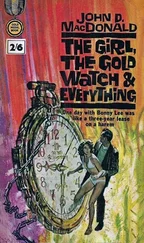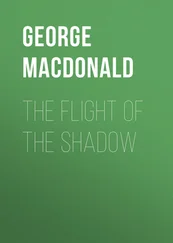“And I’ll be checking you out a little more too,” he said, and gave me a small, tired smile and went out.
Page one of the Fort Courtney Sunday Register bannered LOCAL NURSE SLAIN. They had a sunshiny smiling picture of her that pinched my heart in a sly and painful way.
Very few facts had been furnished by the law — just the way the body had been discovered, the murder weapon, and the estimated time of death. As usual, an arrest was expected momentarily.
It was almost noon on Sunday when I phoned Biddy. She sounded tired and listless. She said Tom had flown up to Atlanta for a business meeting and would be home, he thought, by about midnight. Yes, it was a terrible thing about Penny Woertz. She had always been so obliging and helpful when Maurie had been Dr. Sherman’s patient. Such a really marvelous disposition, never snippy or officious.
“Suppose I come out there and see if I can cheer you up, girl?”
“With songs and jokes and parlor tricks? I don’t think anything would work today. But... come along if you want to.”
I pressed the door chime button three times before she finally came to the door and let me in.
“Sorry to keep you standing out here, Trav. I was putting her back to sleep.”
She led the way back into the big living room, long-legged in yellow denim shorts with brass buttons on the hip pockets, and a faded blue short-sleeved work shirt. She had piled her long straight blond hair atop her head and anchored it in place with a yellow comb, but casual tendrils escaped, and when she turned and gave me a crooked smile of self-mockery, she brushed some silky strands away from her forehead with her fingertips. “I’m the total mess of the month, Travis. Would you like a drink? Bloody Mary? Gin and tonic? Beer?”
“What are you having?”
“Maybe a Bloody would be therapeutic. Want to come help?”
The big kitchen was bright and cheerful, decorated in blue and white. The windows looked across the back lawn toward the lake.
She got out the ice and ingredients and I made them. She leaned against the countertop, ankles crossed, sipped and said, “If I suddenly fall on my face, don’t be alarmed. I did a damfool thing last night after we got her settled down. I had to get my mind off... everything and I went out to the boathouse and painted a fool thing I’ll probably paint out. It was five before I went to bed and Tom woke me up at eight when he left.”
“Can I have a look at it?”
“Well... why not? But it isn’t anything like what I usually do.”
We carried our drinks. There was an outside staircase to the big room over the boathouse, which she had fixed up as a studio. A window air conditioner was humming. She turned on a second one, then went over and turned on an intercom and turned the volume up until I could hear a slow rhythmic sound I suddenly identified as the deep and somewhat guttural breathing of someone in deep sleep.
She said, “Maurie can’t wake up, actually, but I just feel better if I can hear her.” The studio had a composite smell of pigments and oils and thinner. The work stacked against the walls and the few that were hung were semiabstract. Obviously she had taken her themes from nature, from stones, earth, bark, leaves. The colors were powerful. Some of the areas were almost representational.
She waved toward them. “These are the usual me. Kind of old hat. No op and pop. No structures and lumps and walkthroughs.”
“But,” I said, “one hell of a lot of overpainting and glazes, so you can see down into those colors.”
She looked surprised and pleased. “Member of the club?”
“Hell, woman, I even know the trick words that mean absolutely nothing. Like dynamic symmetry.”
“Tonal integrity?”
“Sure. Structural perceptions. Compositionally iconoclastic.”
She laughed aloud and it was a good laugh. “It’s such terrible crap, isn’t it? The language of gallery people and critics, and insecure painters. What are your words, Professor McGee?”
“Does a painting always look the same or will it change according to the light and how I happen to feel? And after it has been hung for a month, will it disappear so completely the only time I might notice it would be if it fell off the wall?”
She nodded thoughtfully. “So I’ll buy that. Anyway... I seldom do the figure. But here is my night work.”
It was on an easel, a horizontal rectangle, maybe thirty inches by four feet. At dead center was a small clearing, a naked female figure sitting, jackknifed, huddled, arms around her legs, face buried against her knees, blond hair spilling down. Around her was angry jungle, slashes of sharp spears of leaf, vine tangle, visceral roots, hints of black water, fleshy tropic blooms, against black-green. It had a flavor of great silence, stillness, waiting.
We studied it and could hear the deep sonorous breathing of the sleeping sister. Biddy coughed, sipped her drink, said, “I think it’s too dramatic and sentimental and... narrative.”
“I say let it sit. You’ll know more about it later.”
She put her drink down, lifted it off the easel, and placed it against the wall, the back of the canvas toward the room. She backed off. “Where I can’t see it, I guess.”
She showed me more of her work and then she turned the intercom off and one of the air conditioners. We walked back to the house. “Another drink and maybe a sandwich?”
“On one condition.”
“Such as?”
“Quick drink and simple sandwich and then you go fall into the sack. I am reliable, dependable, conscientious, and so on. If you’re needed for anything, I’ll wake you up.”
“I couldn’t let you do—”
“Hot shower, clean sheets, blinds closed, and McGee taking care.”
She covered her yawn with the back of her fist. “Bless you, bless you. I’m sold.”
After we ate, she led me upstairs and down the carpeted hallway to Maureen’s room. Maureen slept on her back in the middle of a double bed. The room was air-conditioned to coolness. She wore a quilted bed jacket. The sheets and pillowcases were blue with a white flower pattern. The blanket was a darker blue. Her face and throat were puffed, red-blotched. There was a mixture of small odors in the silence, calamine and rubbing alcohol and perfume. Flavors of illness and of girl. She wore opaque sleep-glasses in spite of the room being darkened.
Biddy startled me by speaking in a normal conversational tone. “I’m going to keep her asleep until at least six o’clock. Oh, she can’t hear us. Not while the Dormed is on.”
As she took me over to the bed to show me what she meant, I saw the small electric cord that led from the heavy pair of glasses to a piece of equipment on the bedside stand. It looked like a small ham radio receiver. There were three dials. A tiny orange light winked constantly. She explained that it was an electrosleep device invented in Germany and distributed in England and the United States by one of the medical supply houses. There were electrodes in the headset, covered with a foam plastic, two which rested on the eyelids, and one at the end of each earpiece where they made contact with the mastoid bone behind each ear. She said that you moistened the foam rubber pads with a salt solution and put the headset on the patient. The control unit was a pulse generator that sent an extremely weak electrical impulse — in fact a thousand times weaker than the current a flashlight bulb requires — through the sleep centers in the thalamus and hypothalamus.
“It’s perfectly safe,” she said. “It’s been used on thousands and thousands of patients. You just adjust the strength and the frequency with these two dials. The other is the on and off switch. Doctor Sherman got it for us and trained me in how to use it. You see, he was afraid of the side effects of making her sleep with medication, in her condition, whatever it is. We do have to give her shots when she gets too upset, but this is usually enough.”
Читать дальше












